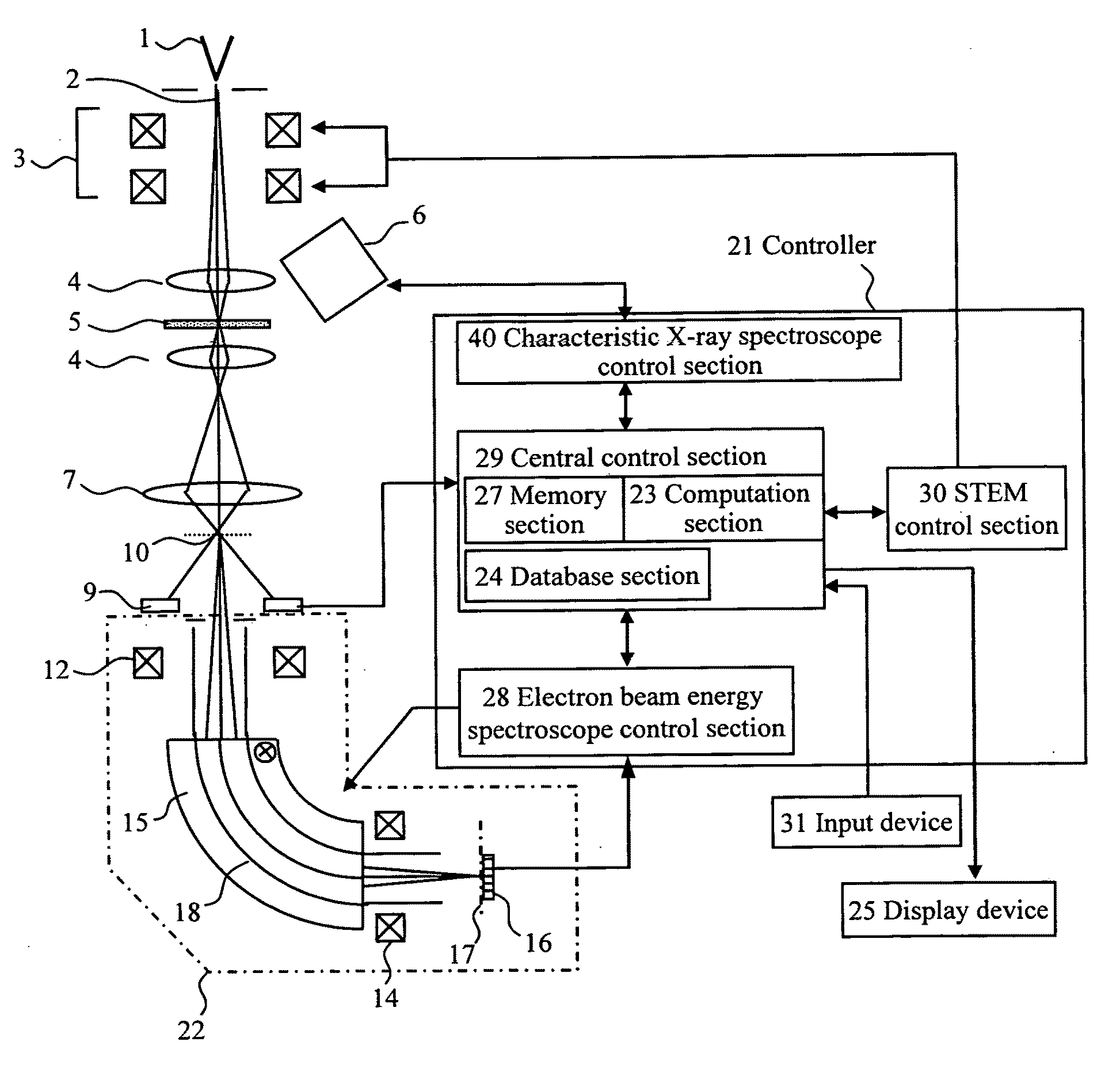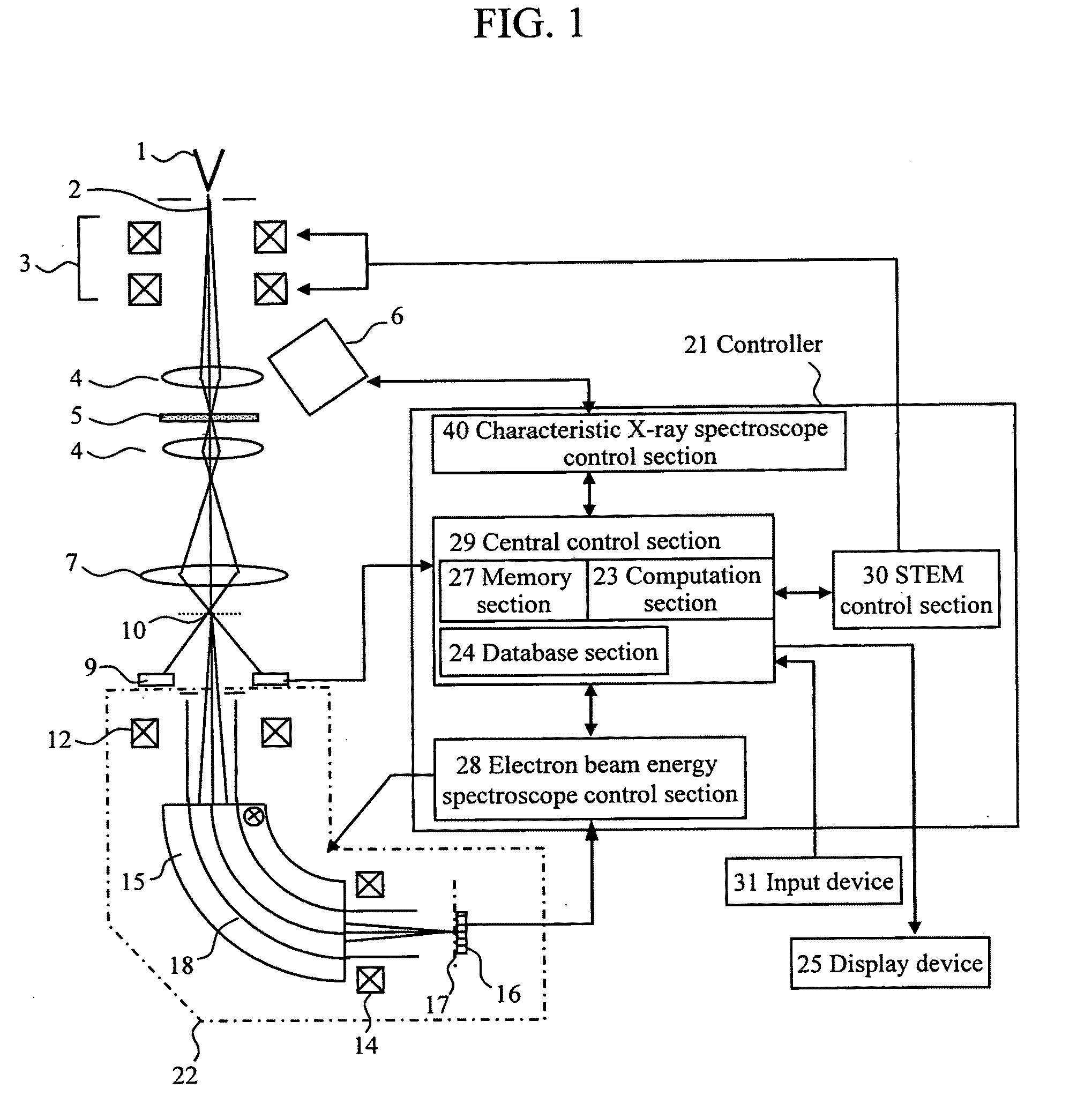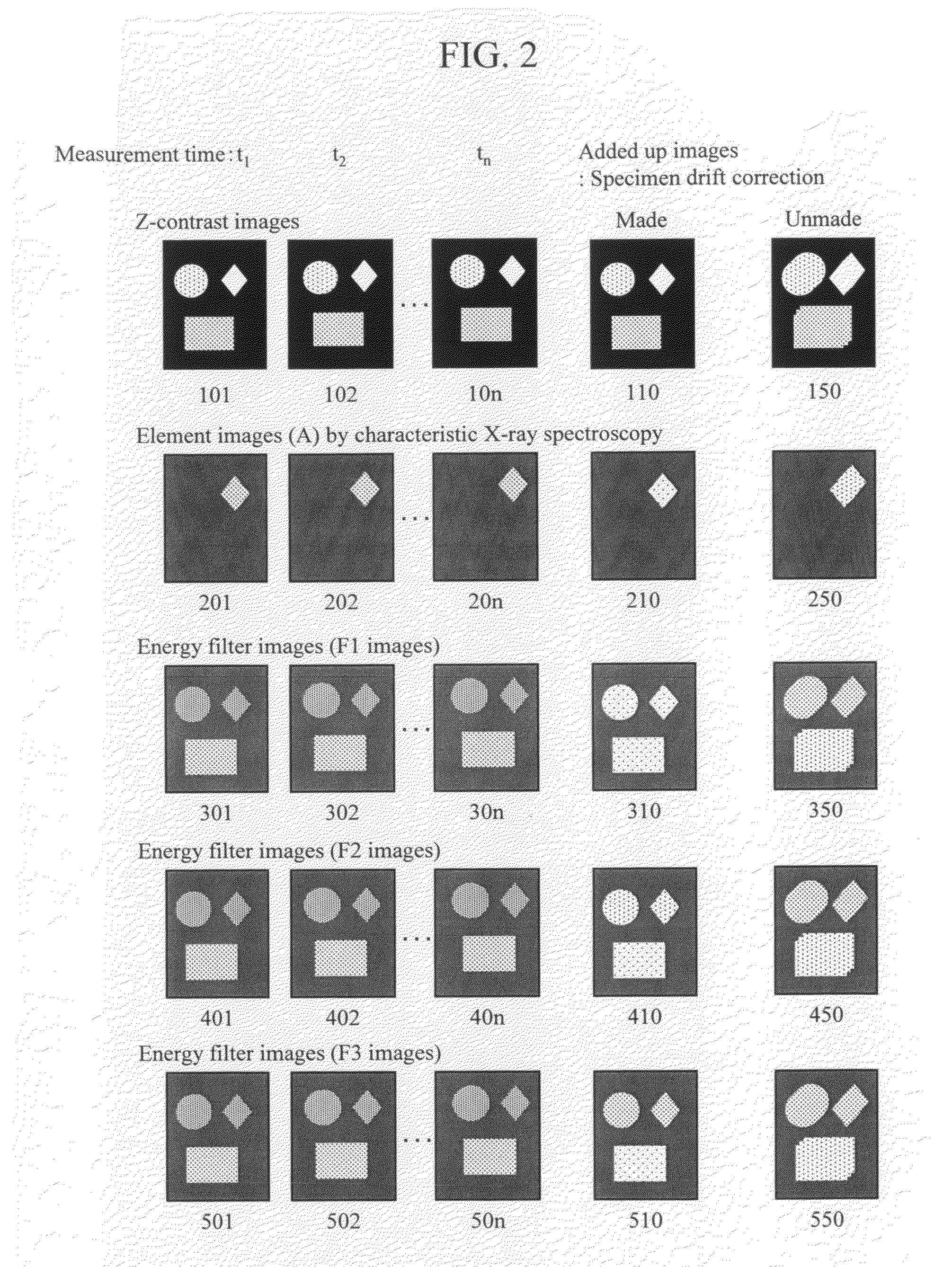Electronic microscope apparatus
a microscope and electronic technology, applied in the direction of instruments, material analysis using wave/particle radiation, heat measurement, etc., can solve the problems of small low intensity of detected characteristic x-rays, and limited deterioration of the spatial resolution of the element image, so as to achieve high spatial resolution and high s/n
- Summary
- Abstract
- Description
- Claims
- Application Information
AI Technical Summary
Benefits of technology
Problems solved by technology
Method used
Image
Examples
first embodiment
[0054](1) Configuration of Scanning Transmission Electron Microscope
[0055]FIG. 1 is a diagram schematically showing a configuration of essential portions of a scanning transmission electron microscope (STEM) having a characteristic X-ray spectrometer and an electron beam energy analyzer (EELS) according to an embodiment of the present invention. This scanning transmission electron microscope is common to the embodiments.
[0056]An electron beam 2 generated in an electron beam source 1 forms a probe by means of an objective lens 4 and the probe is applied to a specimen 5. The position at which the electron beam is applied to the specimen 5 is deflected by electron beam scanning coils 3. Characteristic X-rays are generated from the specimen to which the electron beam is applied, and are detected by a characteristic X-ray spectrometer 6. The electron beam passing through the specimen 5 forms an object point 10 on an electron beam energy analyzer 22 by means of a projection lens 7. The el...
second embodiment
[0077](1) Difference from First Embodiment
[0078]In the first embodiment, energy filter images are obtained and an element image is obtained by using the three sorts of filter images (F1 to F3) (see FIG. 3). In the second embodiment, data from which an element image is obtained by the electron beam energy analyzer (EELS) 22 is not the energy filter images. That is, an EELS spectrum itself is first obtained and the background is extrapolated from the spectrum data to obtain the intensity of the core loss. The EELS spectrum in the second embodiment is a detailed one such that a spectrum shape such as shown in FIG. 4B can be identified. A detailed spectrum is measured with respect to each pixel of an image. On the other hand, in the first embodiment, data in F1, F2, and F3 has a signal intensity through an energy width (ΔE) (FIG. 4A) and a detailed spectrum is not measured.
[0079]In the first embodiment, energy filter images are measured and an EELS-based element image is obtained on the...
third embodiment
[0086](1) Element Image Observation
[0087]FIG. 6 is a diagram for explaining a technique for element image observation according to the third embodiment of the present invention.
[0088]Also in the third embodiment, in the same way as in the first embodiment, elastically scattered electrons from the specimen 5 are detected by the Z-contrast detector 9 in correspondence with the electron beam application position to form a Z-contrast image 1001. Also, simultaneously with the Z-contrast image, an element image (A) by the characteristic X-ray spectrometer (see FIG. 2 because it is omitted in FIG. 6) and an energy filter image (F1) 3001 by the electron beam energy analyzer (see FIG. 2 because energy filter images (F2, F3) are omitted in FIG. 6) are observed. These five sorts of images are the results of image forming on the basis of detection of elastically scattered electrons, characteristic X-rays and energy loss electrons with the detectors performed when the electron beam is applied to...
PUM
 Login to View More
Login to View More Abstract
Description
Claims
Application Information
 Login to View More
Login to View More - R&D
- Intellectual Property
- Life Sciences
- Materials
- Tech Scout
- Unparalleled Data Quality
- Higher Quality Content
- 60% Fewer Hallucinations
Browse by: Latest US Patents, China's latest patents, Technical Efficacy Thesaurus, Application Domain, Technology Topic, Popular Technical Reports.
© 2025 PatSnap. All rights reserved.Legal|Privacy policy|Modern Slavery Act Transparency Statement|Sitemap|About US| Contact US: help@patsnap.com



